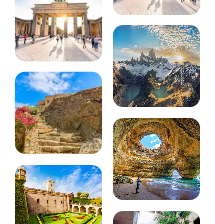10 emblematic bridges in Paris to cross on foot

Paris, the City of Light, reveals all its splendour through the many bridges that majestically span the Seine. These works of art, witnesses to Parisian history, offer walkers unique views of the capital’s emblematic monuments. Crossing Paris on foot and discovering its most remarkable bridges is like taking a journey through the centuries, from medieval architecture to contemporary creations. Each bridge tells a story, reveals a panorama and invites contemplation. Whether you’re an architecture enthusiast, a history buff or simply a stroller in search of beauty, these 10 emblematic bridges of Paris promise unforgettable moments during your pedestrian strolls through the French capital.
200 audioguided tours for cities all around the world
DownloadSee also the Paris guide :
- 15 romantic things to do in Paris as a couple
- 15 free things to do and see in Paris
- 20 must-see museums in Paris
- The most beautiful parks and gardens to discover in Paris
- Cruises on the Seine in Paris: itineraries, fares and advice
- Visit Paris in 3 days: a guide to the French capital
- 10 things to do in the Marais district of Paris
- Top 7 best hotels in Paris
- Top 8 activities in Paris
1. Pont Neuf: the oldest bridge in Paris
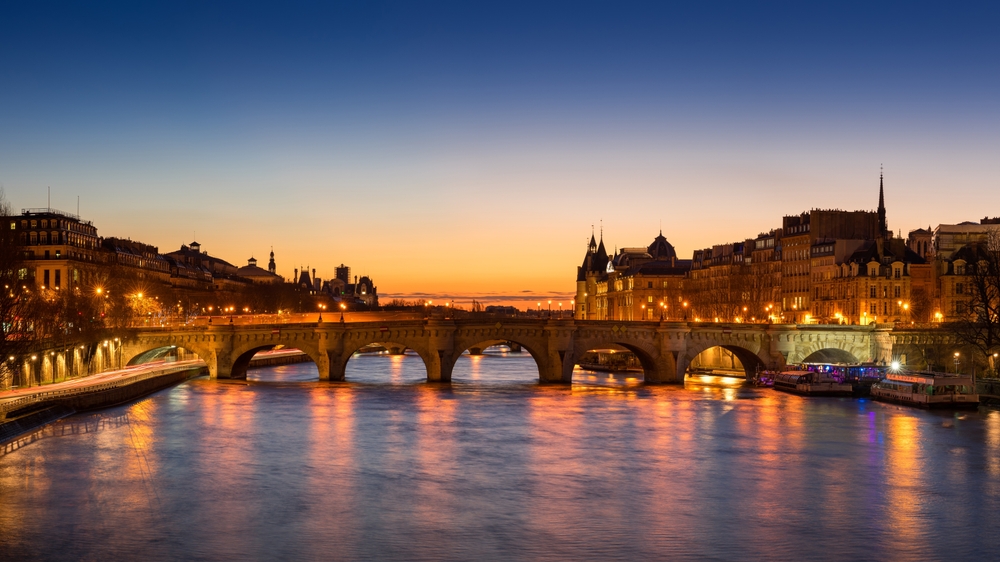
Paradoxically called “Neuf”, this bridge is in fact the oldest in Paris still standing today. Built between 1578 and 1607, the Pont Neuf crosses the Seine on the Île de la Cité, linking the 1st and 6th arrondissements. Designed by Henri III and inaugurated by Henri IV, this revolutionary bridge was the first to be built without houses on either side and with pavements for pedestrians.
238 metres long and 20 metres wide, the Pont Neuf is distinguished by its twelve arches and 381 sculpted mascarons, the little grinning heads that adorn its sides. At the centre of the bridge, the equestrian statue of Henri IV pays tribute to the king who saw the completion of this architectural work. Listed as a historic monument since 1889 and a UNESCO World Heritage Site, the bridge offers a breathtaking view of the Louvre and the Ile Saint-Louis. To discover the fascinating history of this emblematic site during your visit to Paris, let yourself be guided by the audio guides who will reveal all its secrets to you.
2. The Alexandre III bridge: the most beautiful bridge in Paris
Considered to be the most elegant bridge in the capital, the Alexander III Bridge is a veritable architectural jewel linking the 7th and 8th arrondissements. Built between 1896 and 1900 for the Universal Exhibition, the bridge symbolises the Franco-Russian alliance and bears the name of Tsar Alexander III, father of Nicholas II.
With a length of 150 metres and a width of 40 metres, the Pont Alexandre III is characterised by its unique arch, which preserves the perspective between the Champs-Élysées and the Invalides. Its four pylons adorned with gilded sculptures and its 32 bronze candelabras give it an unrivalled magnificence. The sculpted groups represent “La Renommée des Sciences” and “La Renommée des Arts” on the right bank, and “La Renommée du Combat” and “La Renommée du Commerce” on the left bank. This bridge offers one of the most beautiful views in Paris, with the Eiffel Tower on one side and the Invalides dome on the other, particularly when cruising on the Seine.
3. The Pont des Arts: the former lovers’ bridge
The Pont des Arts, a pedestrian bridge linking the Louvre to the Institut de France, remains one of the most romantic bridges in Paris despite the disappearance of the famous love padlocks. Inaugurated in 1984 to replace the original structure dating from 1804, this 155-metre-long metal bridge offers a unique view of the Ile de la Cité and Notre-Dame de Paris.
From 2008 to 2015, the Pont des Arts became world-famous for the tradition of love padlocks, the little locks that couples hung on the railings before throwing the key into the Seine. However, the weight of almost 45 tonnes of padlocks forced the City of Paris to remove them and install glass panels to preserve the structure. Today, the Pont des Arts is still a popular place to take a stroll, offering one of the most beautiful views of the Louvre and making it a must for those visiting Paris on foot. Street artists and musicians continue to enliven this place steeped in history and poetry.
4. The Bir-Hakeim bridge: the cinema bridge
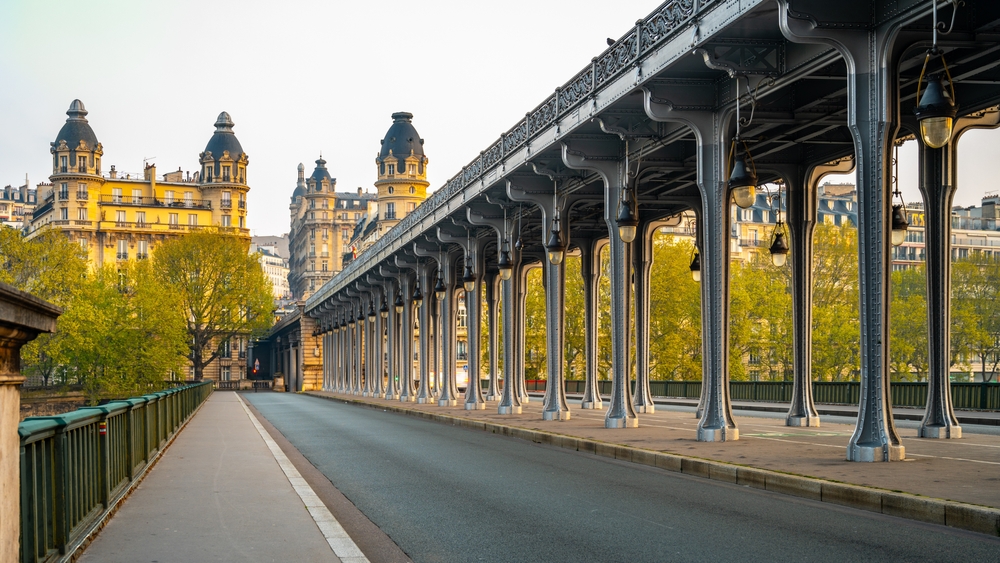
The Bir-Hakeim bridge, which links the 15th and 16th arrondissements, has become a star of the seventh art thanks to its numerous film appearances. Built between 1903 and 1905, this 237-metre-long metal bridge owes its international fame to Christopher Nolan’s film “Inception”, as well as works such as “Le Dernier Tango à Paris” and “Peur sur la ville”.
Its two-level architecture makes it unique: the upper level is home to line 6 of the Paris metro, while the lower level is reserved for cars, bikes and pedestrians. This configuration offers exceptional photographic views of the Eiffel Tower, particularly appreciated at sunset. The bridge takes its name from the Battle of Bir Hakeim, a Free French victory in Libya in 1942. For lovers of photography and cinema, this bridge is a must when exploring Paris, offering unique framing shots of the symbol of the French capital.
5. The Simone-de-Beauvoir footbridge: contemporary boldness
Inaugurated in 2006, the Simone-de-Beauvoir footbridge represents modern Parisian architecture with its bold, lens-shaped design. This exclusively pedestrian and cycle bridge links the 12th and 13th arrondissements over a length of 304 metres.
Designed by Austrian architect Dietmar Feichtinger, this footbridge is distinguished by its unique lenticular structure, which seems to defy the laws of gravity. It does not rest in the water, but on the tracks lining the high banks of the Seine. This technical feat creates a striking visual effect, particularly at night when the lighting highlights its elegant curves. The footbridge offers an original view of Paris, in particular of the Bibliothèque nationale de France and the Parc de Bercy. Its name honours Simone de Beauvoir, an emblematic figure of French feminism, and symbolises Paris’s evolution towards a more modern and inclusive architecture.
Download the audio tour to discover Paris on foot and on your own
For the ultimate exploration of Paris’s bridges and their fascinating histories, the Navaway audio tour takes you on an in-depth discovery of Paris. This 6.2km route guides you through 18 of the capital’s major landmarks, including several of its iconic bridges, with enriching historical commentary and captivating anecdotes that reveal the soul of each place you pass.
6. The Concorde Bridge: a witness to revolutionary history
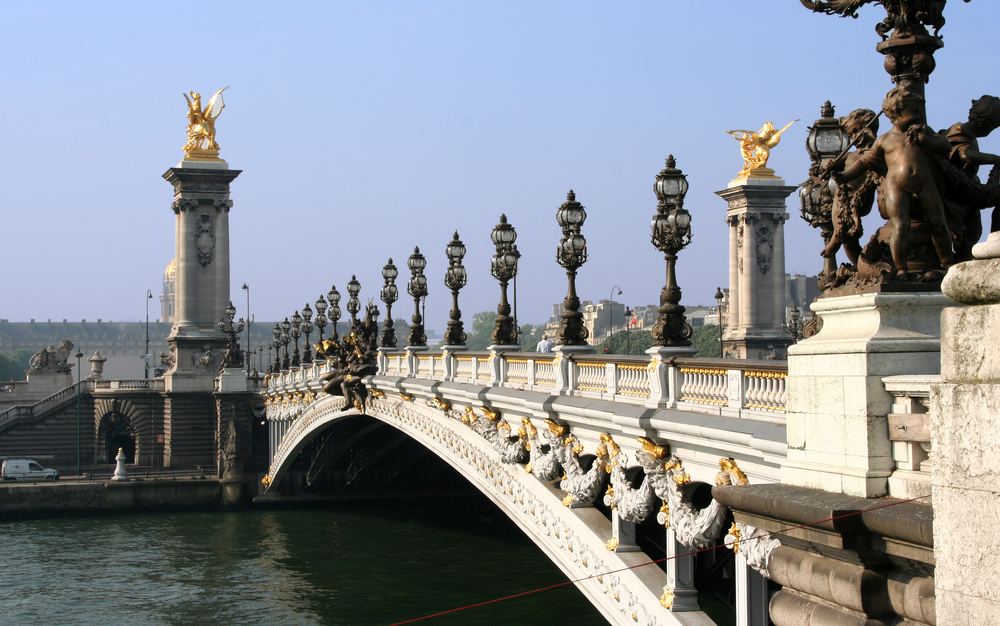
Built between 1787 and 1791, the Pont de la Concorde links the Place de la Concorde to the 7th arrondissement and is a key witness to France’s revolutionary history. This stone bridge, 153 metres long and 35 metres wide, was built using stones from the Bastille, a powerful symbol of the transformation of the Ancien Régime.
Its strategic location offers a remarkable view of the National Assembly, the Place de la Concorde with its Luxor obelisk, and the Tuileries gardens. The sober, elegant architecture of this bridge, the work of Jean-Rodolphe Perronet, blends perfectly with the surrounding urban landscape. The five arches of the Concorde Bridge frame the Seine magnificently, offering pedestrians a soothing stroll through the hustle and bustle of Paris. The bridge is an ideal way to visit the Musée d’Orsay and discover French Impressionist art.
7. The Pont Saint-Louis: the artistic soul of Paris
The Pont Saint-Louis, which links the Île de la Cité to the Île Saint-Louis, embodies the bohemian and artistic spirit of Paris. Just 67 metres long, this metal bridge, rebuilt in 1970, replaces a succession of bridges that have marked this area since 1634.
A veritable open-air stage, the Saint-Louis Bridge welcomes street musicians, artists and acrobats every day, creating a unique and authentically Parisian atmosphere. The improvised shows put on by these street performers turn every crossing into a moment of spontaneous entertainment. The view from the bridge allows you to admire the historic facades of the Île Saint-Louis, with its 17th-century town houses, as well as the chevet of Notre-Dame de Paris. This unique perspective makes the Pont Saint-Louis a favourite spot for photographers and a must-see when exploring Paris in its entirety.
8. The Mirabeau Bridge: the poetry of Apollinaire
Made famous by Guillaume Apollinaire’s poem “Le Pont Mirabeau”, this bridge linking the 15th and 16th arrondissements evokes the melancholy and beauty of Paris. Built between 1893 and 1896, this 173-metre-long metal bridge bears the name of Honoré-Gabriel Riquetti, Comte de Mirabeau.
Four sculptures by Jean-Antoine Injalbert adorn the pylons of the bridge: “La Ville de Paris” and “L’Abondance” upstream, “Le Commerce” and “La Navigation” downstream. A bronze plaque engraved with verses by Apollinaire recalls the poet’s attachment to this place: “Under the Mirabeau Bridge flows the Seine / And our loves / Must I remember them / Joy always came after sorrow”. The bridge offers a beautiful view over the Seine and is an ideal starting point for exploring the chic residential districts of western Paris, while enjoying the tranquillity of the banks of the Seine.
9. The Léopold-Sédar-Senghor footbridge: discreet elegance
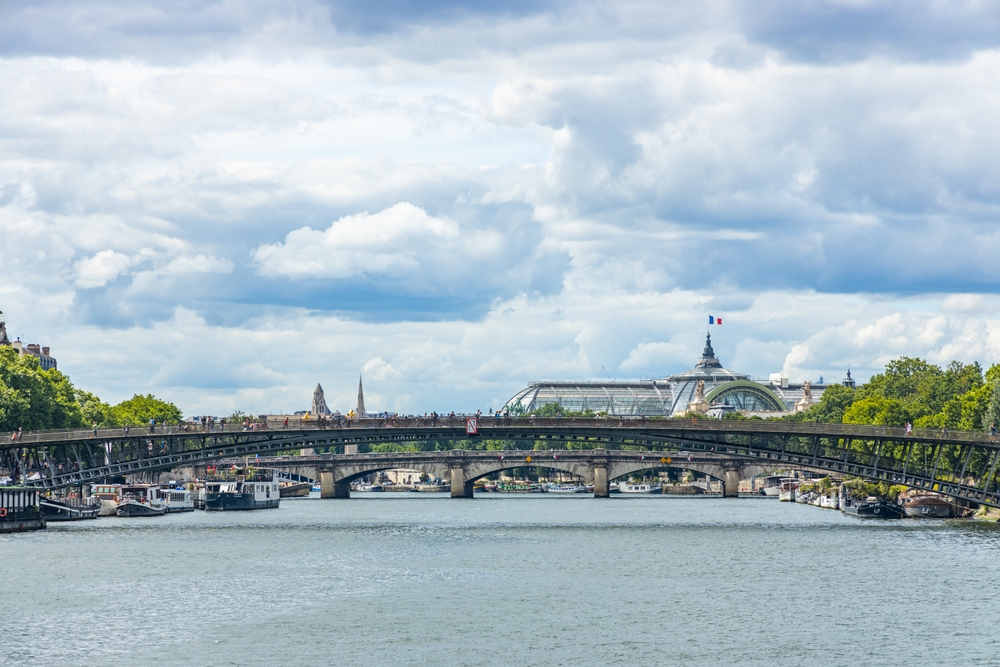
Linking the Tuileries Gardens to the Musée d’Orsay, the Léopold-Sédar-Senghor footbridge, formerly the Solférino footbridge, forms an elegant link between two of Paris’s cultural highlights. This 106-metre-long metal footbridge, inaugurated in 1999, honours the memory of the Senegalese poet and statesman.
Its contemporary architecture, the work of engineer Marc Mimram, features a low-arched structure that blends harmoniously into the Parisian urban landscape. Exclusively pedestrian, this footbridge offers a peaceful stroll with a panoramic view of the Louvre, the Tuileries gardens and the Musée d’Orsay. Its strategic position makes it a privileged passageway for art lovers wishing to move from one museum to another. The night-time lighting of the footbridge creates a hushed atmosphere that is particularly popular with night-time strollers and lovers of the illuminated capital.
10. The Alma bridge: memory and emotion
The Pont de l’Alma bridge, rebuilt between 1970 and 1974, links the 7th and 8th arrondissements and is still steeped in contemporary history. 153 metres long and 42 metres wide, the bridge owes its name to the Battle of the Alma (1854) during the Crimean War.
Four statues adorned the original bridge: the Zouave, the Grenadier, the Chasseur à pied and the Artilleur de marine. Only the Zouave was preserved during the reconstruction and is traditionally used as a landmark to measure flood levels on the Seine. The Pont de l’Alma has also become a place of remembrance since the accident that claimed the life of Lady Diana in 1997 in the tunnel nearby. The Flame of Liberty, a replica of the Statue of Liberty donated by the Herald Tribune in 1987, has become an unofficial memorial. This bridge offers a beautiful view of the Eiffel Tower and is an important stopping-off point for visiting Paris and its emblematic monuments.
In conclusion, walking across these 10 emblematic bridges of Paris is like walking through the history of the French capital from the Middle Ages to the present day. Each bridge reveals a unique aspect of Parisian identity: the architectural innovation of the Pont Neuf, the elegance of the Pont Alexandre III, the romanticism of the Pont des Arts, or the bold modernity of the Simone-de-Beauvoir footbridge. These works of art are not simply ways of crossing the Seine, but real invitations to contemplation and discovery. For an in-depth exploration of these architectural marvels and their fascinating stories, let yourself be guided by the Navaway audio tour, which will reveal all the secrets of the French capital as you walk along.
Frequently asked questions
Which is the oldest bridge in Paris?
Paradoxically, the Pont Neuf is the oldest bridge in Paris still standing today. Built between 1578 and 1607, it was revolutionary for its time as it was the first Parisian bridge without houses and with pavements for pedestrians.
Which bridge in Paris offers the best view of the Eiffel Tower?
The Bir-Hakeim bridge offers one of the finest views of the Eiffel Tower, particularly from its pedestrian level. This view has become famous thanks to the many films that have been shot here, including Christopher Nolan’s “Inception”.
Can we still hang love padlocks on the Pont des Arts?
No, since 2015 it has no longer been possible to hang padlocks on the Pont des Arts. The City of Paris has removed the 45 tonnes of padlocks that were threatening the structure of the bridge and installed glass panels to preserve the structure.
How long does it take to cross all these bridges on foot?
Crossing these 10 emblematic bridges of Paris on foot requires a full day if you want to take the time to admire each structure and enjoy the panoramic views. Allow around 6 to 8 hours, including photographic breaks and moments of contemplation.
What is the most recent bridge in this selection?
The Simone-de-Beauvoir footbridge is the most recent in this selection, inaugurated in 2006. It represents contemporary Parisian architecture with its bold lens-shaped design and unique lenticular structure.
200 audioguided tours for cities all around the world
Download